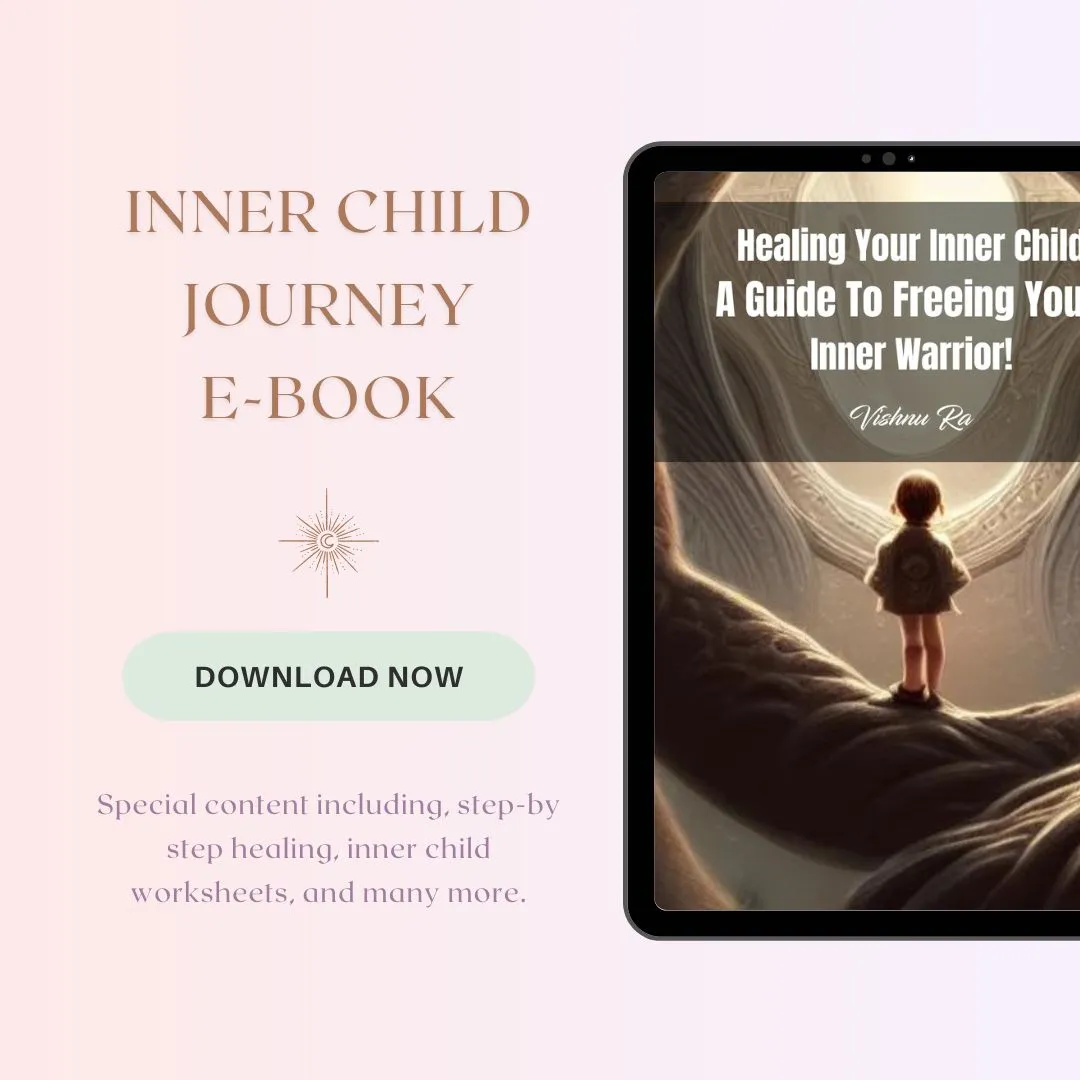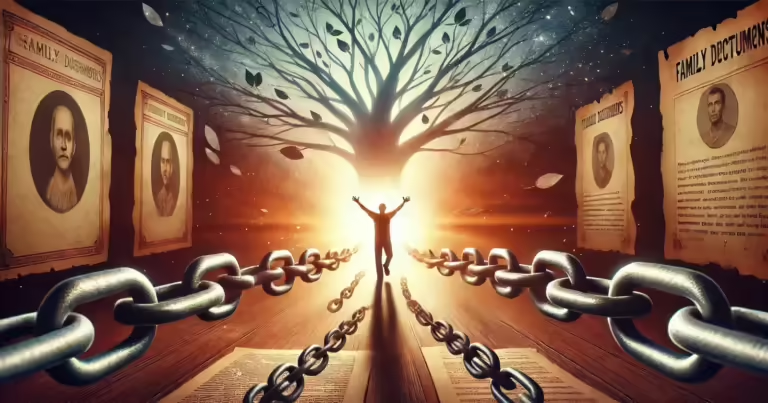How to Heal Your Inner Child: A Comprehensive Guide

Have you ever wondered why certain things trigger intense emotions, seemingly out of nowhere? Or why do you sometimes react in ways that feel out of character for your adult self?
These reactions may be tied to an often overlooked aspect of our psyche known as the inner child. Understanding and healing your inner child can unlock a deeper sense of peace and emotional stability, but what does this mean?
The concept of the inner child refers to a part of your subconscious that retains the experiences, emotions, and memories from your childhood. These experiences shape how you respond to situations as an adult.
When the inner child is wounded by past traumas or unmet needs, it can lead to emotional and psychological challenges that persist into adulthood.
In this guide, we’ll explore what it means to heal your inner child, why it’s essential for your mental health, and how you can begin this transformative journey.
Whether you’re new to inner child work or looking to deepen your understanding, this article will provide the insights and tools you need to nurture and heal this vital part of yourself. Let’s dive in and discover how healing your inner child can lead to a more fulfilled and balanced life.
Understanding the Inner Child
The inner child is a concept that embodies the part of your subconscious that holds onto childhood memories, experiences, and emotions. Think of it as a younger version of yourself that carries the innocence, joy, and wounds of your early years.
This inner child influences your behaviors, reactions, and feelings, often without you realizing it.
Understanding the inner child begins with recognizing its presence in your life. The inner child is not a separate entity but rather an integral part of your psyche that influences your adult self.
This part of you remembers the good times, like playing with friends or feeling safe in your parents’ arms, but it also holds onto the painful moments and trauma that may have left deep emotional wounds.
Signs That Your Inner Child Needs Healing
Healing your inner child is crucial for your overall mental health. When the inner child is wounded, it can manifest in various ways in your adult life. Here are some signs that your inner child needs healing:
Recognizing these signs is the first step toward healing your inner child. By acknowledging and validating these feelings, you open the door to inner child work that can transform your life.
Subscribe to Create Higher Vibrations!
Get Inspiration and Practical advice straight to your inbox.
The Impact of a Damaged Inner Child
The emotional and psychological effects of a damaged inner child can be profound and far-reaching, influencing various aspects of an individual’s life well into adulthood. Understanding these impacts is crucial for initiating the healing process.
Emotional and Psychological Effects
Common Behaviors and Patterns Stemming from Inner Child Wounds
Recognizing these signs and behaviors is the first step toward healing your inner child. Engaging in inner child work, practicing self-compassion, and seeking help from a therapist can help you address these deep-seated issues and improve your overall mental health.
What Are The Top 5 Inner Child Wounds
Understanding the top inner child wounds is essential for recognizing the root of many emotional and psychological struggles.
These wounds abandonment, rejection, humiliation, betrayal, and injustice—are often formed in childhood and can persist into adulthood, impacting various aspects of life.
1. Abandonment
Abandonment wounds occur when a child feels deserted by caregivers or important figures in their life. This can happen through physical absence, emotional unavailability, or neglect.
As adults, individuals with abandonment wounds often experience intense fear of being alone, clinginess in relationships, and difficulty trusting others. They may also exhibit behaviors such as people-pleasing or staying in unhealthy relationships to avoid being left alone.
2. Rejection
Rejection wounds stem from feelings of being unwanted or not accepted by peers, family, or society. This type of wound can severely damage self-esteem and self-worth.
Adults who experienced rejection as children might struggle with fear of failure, avoidance of social situations, and pervasive self-doubt. They often expect rejection in various forms, leading to withdrawal or overly defensive behaviors to protect themselves from further hurt.
3. Humiliation
Humiliation wounds arise when a child is shamed or belittled, often publicly. This can happen through harsh criticism, ridicule, or punitive actions by caregivers or peers.
Those with humiliation wounds may grow up to feel a deep sense of unworthiness and often engage in self-deprecating behaviors. They might also become overly sensitive to criticism, avoiding situations where they fear being judged or embarrassed.
4. Betrayal
Betrayal wounds develop when a child experiences broken trust, typically from a caregiver who fails to keep promises or protect them. This leads to issues with trust and intimacy in adulthood.
Individuals with betrayal wounds might become controlling or perfectionistic, striving to prevent any possibility of being let down again. They often struggle with jealousy and suspicion in relationships, which can hinder their ability to form deep, trusting connections.
5. Injustice
Injustice wounds are caused by feelings of unfair treatment, often by overly critical or authoritarian caregivers. Children who feel their emotions and individuality are disregarded may grow into adults with rigid perfectionism and a strong sense of right and wrong.
They may have difficulty accepting their own or others’ mistakes, leading to a black-and-white view of the world. This wound can result in chronic self-criticism and a persistent drive to prove their worth through achievements.

Steps to Heal Your Inner Child
Healing your inner child involves a series of deliberate and compassionate steps aimed at addressing past traumas and fostering emotional well-being. Here are some essential tips for healing your inner child and starting this transformative journey:
1. Acknowledge Your Inner Child
The first step in healing is recognizing and validating your inner child. This involves acknowledging the pain and trauma experienced during childhood.
Speak to your inner child with compassion, affirming that their feelings are valid and important. This process of validation helps in building a bridge between your adult self and your inner child.
2. Practice Self-Compassion
Self-compassion is crucial in healing the child’s self. Treat yourself with the same kindness and understanding you would offer to a loved one.
This involves being gentle with yourself, especially when confronted with difficult emotions or memories. Self-compassion helps in soothing the wounded inner child and promoting emotional healing.
3. Engage in Inner Child Work Activities
Participating in activities that connect with your inner child can be profoundly healing. This can include journaling, where you write letters to your younger self, expressing love and understanding.
Creative activities like drawing, painting, or playing can also help in reconnecting with the playful and carefree aspects of your inner child.
4. Seek Professional Help
Sometimes, the wounds of the inner child are deep and complex, requiring the assistance of a mental health professional. Trauma Therapists who specialize in inner child work can provide valuable guidance and support.
They can help you navigate the healing process and offer therapeutic techniques tailored to your specific needs.
5. Practice Mindfulness and Breathwork
Mindfulness and breathwork are powerful tools for healing your inner child. These practices help in grounding yourself in the present moment and reducing anxiety.
Deep, mindful breathing can calm your nervous system and create a sense of safety for your inner child. Engaging all your senses in mindfulness exercises can also foster a deeper connection with your inner child.
6. Reframe Your Narrative
Reframing your life narrative involves looking at past traumas through a new, empowering perspective. Instead of seeing yourself solely as a victim, recognize the resilience and strength you have developed.
This shift in perspective can help break free from cycles of victimhood and foster a sense of empowerment and growth.
7. Release Your Emotions
Allow yourself to feel and express the emotions associated with your inner child’s wounds. This might involve crying, screaming, or other forms of emotional release.
Embracing these emotions without judgment can be liberating and essential for healing. Lean on your support system or engage in self-reflection to process these feelings healthily.
Each step is an opportunity to nurture your inner child with the love and compassion they deserve, ultimately fostering deeper self-understanding and emotional resilience.
Benefits and Challenges of Self-Healing
Benefits:
Challenges:
Healing your inner child on your own is a viable option, especially with the right strategies and a commitment to self-care.
While it comes with its challenges, the benefits of self-discovery and empowerment can make the journey deeply rewarding. If the trauma feels overwhelming, seeking help from a therapist or Coach is always a wise choice.

How to Connect with Your Inner Child
Connecting with your inner child involves engaging in activities that foster creativity, relaxation, and self-reflection. These practices can help you reconnect with the playful, curious, and emotional aspects of yourself that were often more pronounced during childhood.
Creative Exercises
Guided Meditations and Visualizations
By incorporating these creative exercises, guided meditations, and visualizations into your routine, you can foster a deeper connection with your inner child.
These practices can help you nurture your emotional well-being, promote self-awareness, and facilitate healing from past traumas. Remember, the goal is to create a safe and compassionate space for your inner child to express themselves and heal.
How Long Does It Take to Heal Your Inner Child?
Healing inner child trauma is a deeply personal and variable process. The duration can differ significantly from one individual to another, influenced by various factors and personal circumstances.
Understanding these factors and setting realistic expectations can help you navigate this healing journey with patience and compassion.
Factors Influencing the Healing Process
Setting Realistic Expectations
Healing your inner child is a profound and transformative journey. While it may take time and patience, the rewards of emotional freedom, self-understanding, and inner peace are well worth the effort.
Inner Child Healing testimonials
Lisa’s Creative Renewal
Lisa reconnected with her playful, creative side through inner child work, which significantly boosted her career as an artist.
By allowing herself to explore and enjoy activities she loved as a child, Lisa reignited her creativity and found new inspiration for her work.
Her story demonstrates the power of inner child healing in unlocking creativity and enhancing professional success.
Alesa’s Transformation: Embracing “Enoughness”
Alesa, once a little girl named Kake who felt neglected and unloved, carried her childhood wounds into adulthood.
During an intensive therapy session, Alesa confronted her past, addressing the neglect and emotional pain she experienced.
By embracing her inner child with empathy and love, she shifted her lifelong belief of scarcity to a mindset of “enoughness.”
This transformation enabled her to feel worthy of love and care, breaking the cycle of self-neglect and fostering healthier relationships.
Final Thoughts
Healing your inner child is a vital process for emotional well-being and personal growth. We explored the concept of the inner child, its impact on adult life, and the steps to begin healing.
Engaging in activities like art, journaling, and guided meditations, as well as seeking professional help when necessary, are effective ways to start this journey. Real-life stories highlight the transformative power of addressing childhood wounds.
Starting on this healing journey can seem daunting, but the benefits—greater emotional stability, improved relationships, and enhanced creativity—are well worth the effort. Remember, healing is a gradual process requiring patience and self-compassion.
Healing the wounded child not only nurtures your present self but also paves the way for a more fulfilling and balanced life. Start today, embrace your past with kindness, and unlock the potential for a brighter, more harmonious future. Your inner child deserves it.









